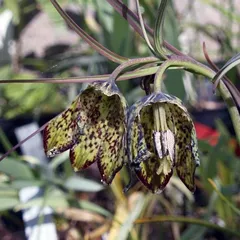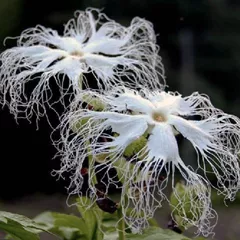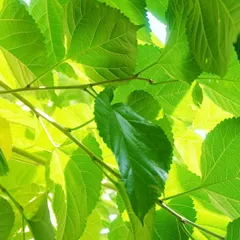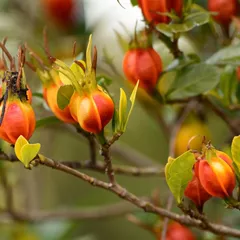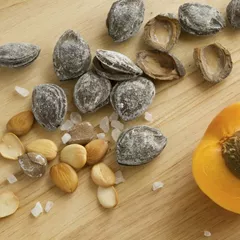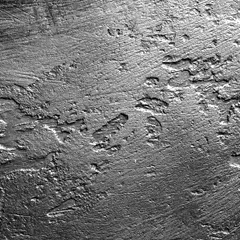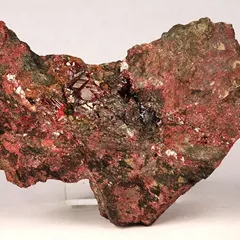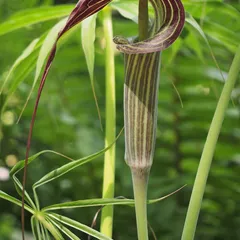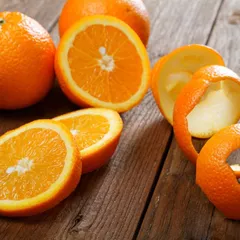Qi Ge San
Qi Ge San
Chinese: 启隔散
Pinyin: Qǐ Gé Sàn
Other names: Open Up the Diaphragm Powder
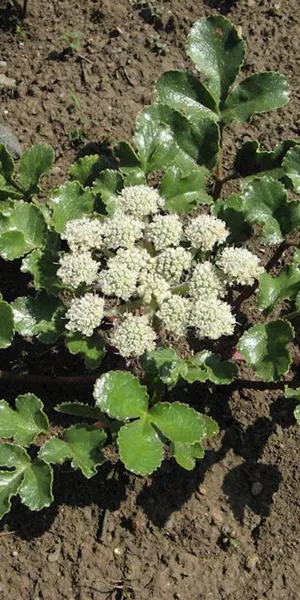
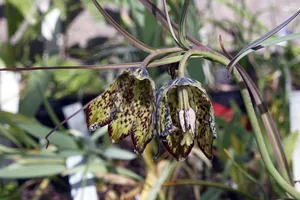
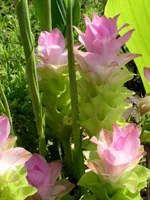
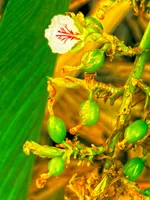




Qi Ge San
Qi Ge San
Chinese: 启隔散
Pinyin: Qǐ Gé Sàn
Other names: Open Up the Diaphragm Powder
Number of ingredients: 8 herbs
Formula category: Formulas that promote Qi movement
Conditions for which it may be prescribed: EsophagitisEsophageal diverticulumEarly stages esophageal cancer
- Regulates Qi and removes Stagnation
- Moistens Dryness
- Transforms Phlegm
Contraindications: Although this formula moistens Dryness, its focus is on invigorating Qi and... Although this formula moistens Dryness, its focus is on invigorating Qi and transforming Phlegm. It should be contraindicated in cases of occlusion due to Blood Stagnation characterized by an inability to swallow food or vomiting up of Blood, or in Yin Deficiency patterns with Body Fluid Deficiency characterized by a tongue without coating, or in Qi and Yang Deficiency patterns accompanied by weight loss and fading spirits. see more
Source date: 1732 AD
Source book: Awakening of the Mind in Medical Studies
The information provided here is not a replacement for a doctor. You shouldn't use it for the purpose of self-diagnosing or self-medicating but rather so you can have a more informed discussion with a professional TCM practitioner.
Qi Ge San is a 8-ingredient Chinese Medicine formula with Glehnia Roots (Bei Sha Shen) and Fritillary Bulbs (Chuan Bei Mu) as principal ingredients.
Invented in 1732 AD, it belongs to the category of formulas that promote Qi movement. Its main actions are: 1) regulates Qi and removes Stagnation and 2) moistens Dryness.
In Chinese Medicine health conditions are thought to arise due to "disharmonies" in the body as a system. These disharmonies are called "patterns" and the very purpose of herbal formulas is to fight them in order to restore the body's harmony.
In this case Qi Ge San is used by TCM practitioners to fight patterns like Qi Stagnation. From a Western Medicine standpoint, such patterns can give rise to a range of conditions such as esophagitis, esophageal diverticulum or early stages esophageal cancer for instance.
On this page, after a detailed description of each of the eight ingredients in Qi Ge San, we review the patterns and conditions that Qi Ge San helps treat.
The eight ingredients in Qi Ge San
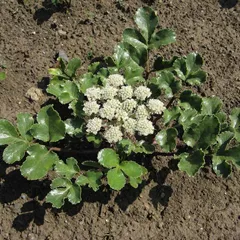
Bei Sha Shen is a king ingredient in Qi Ge San. Like the name indicates, it means it has more power than other ingredients in the formula.
1. Glehnia Roots (Bei Sha Shen)
Part used: Dried root
Nature: Cool
Meridian affinity: LungStomach
Category: Tonic herbs for Yin Deficiency
Bei Sha Shen clears Stomach Heat and tonifies without causing Stagnation. The combination of the two key herb, Fritillary bulb and Glehnia root effectively invigorates Qi of the Upper Burner when it has become Stagnated by Phlegm.
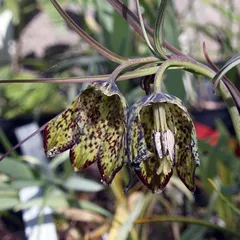
Chuan Bei Mu is a king ingredient in Qi Ge San. Like the name indicates, it means it has more power than other ingredients in the formula.
2. Fritillary Bulbs (Chuan Bei Mu)
Part used: Dried bulb
Nature: Cool
Chuan Bei Mu removes Stagnation and transforms Phlegm without causing Dryness. The combination of the two key herb, Fritillary bulb and Glehnia root effectively invigorates Qi of the Upper Burner when it has become Stagnated by Phlegm.
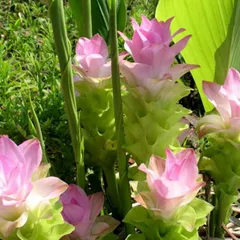
Yu Jin is a deputy ingredient in Qi Ge San. This means it helps the king ingredient(s) treat the main pattern or it serves to treat a coexisting pattern.
3. Turmeric Tubers (Yu Jin)
Part used: Dried root tuber
Nature: Cold
Meridian affinity: HeartLiverLung
Category: Herbs that invigorate the Blood
Yu Jin facilitates the Qi movement, in order to remove Stagnation while also dispelling Blood Stagnation to disperse clumping
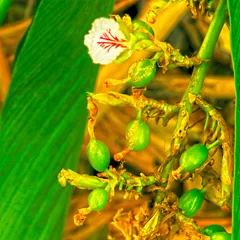
Sha Ren Ke is a deputy ingredient in Qi Ge San. This means it helps the king ingredient(s) treat the main pattern or it serves to treat a coexisting pattern.
4. Amomum Fruit Skins (Sha Ren Ke)
Part used: The fruit skin
Nature: Warm
Taste(s): Pungent
Meridian affinity: SpleenStomachKidney
Category: Aromatic herbs that transform Dampness
In general Sha Ren Ke's main actions are as follows: "Warms the Spleen and transforms Dampness. Promotes the movement of Qi for Damp and Stagnant conditions of the Stomach and Spleen. Settles a restless fetus and stops morning sickness. Prevents cloying and Stagnation sometimes caused by tonifying herbs."
In the context of Qi Ge San, it is used because it invigorates Qi of the Middle Burner and harmonizes the Stomach to stop vomiting and retching.
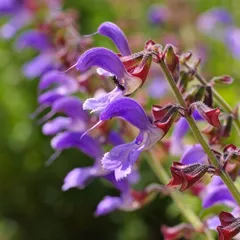
Dan Shen is an assistant ingredient in Qi Ge San. This means that it either serves to reinforces the effect of other ingredients or it moderates their toxicity.
5. Red Sage Roots (Dan Shen)
Part used: Dried root and rhizome
Nature: Cool
Taste(s): Bitter
Category: Herbs that invigorate the Blood
Dan Shen invigorates the Blood, eliminates Stagnation, and thereby assists the dispersion of clumping that has penetrated to the Blood aspect. Together, all the assistant herbs effectively facilitate the
downward-directing of turbid Phlegm and support the ascent of the clear Yang to unblock the Qi dynamic and eliminate Excess Pernicious Factors without causing further Dryness.
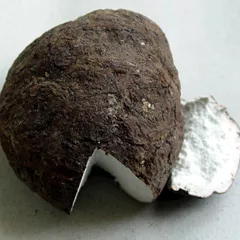
Fu Ling is an assistant ingredient in Qi Ge San. This means that it either serves to reinforces the effect of other ingredients or it moderates their toxicity.
6. Poria-Cocos Mushrooms (Fu Ling)
Part used: Dried sclerotium
Nature: Neutral
Taste(s): Sweet
Meridian affinity: HeartKidneyLungSpleen
Category: Herbs that drain Dampness
Fu Ling removes Dampness and transforms Phlegm and
gently supports the Middle Burner in its production of Blood without drying effect. Together, all the assistant herbs effectively facilitate the
downward-directing of turbid Phlegm and support the ascent of the clear Yang to unblock the Qi dynamic and eliminate Excess Pernicious Factors without causing further Dryness.
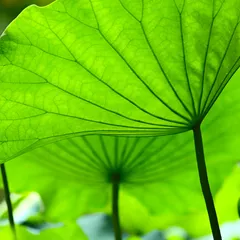
He Ye Di is an assistant ingredient in Qi Ge San. This means that it either serves to reinforces the effect of other ingredients or it moderates their toxicity.
7. Lotus Leaf Calyxes (He Ye Di)
Part used: The leaf calyx
Nature: Neutral
Taste(s): Bitter
Meridian affinity: SpleenLarge intestineLiver
Category: Herbs that clear Heat and purge Fire and/or clear Summer Heat
He Ye Di directs the Yang upward and strengthens the Spleen's transportive and transformative functions to dispel Dampness and harmonize the Stomach. Together, all the assistant herbs effectively facilitate the
downward-directing of turbid Phlegm and support the ascent of the clear Yang to unblock the Qi dynamic and eliminate Excess Pernicious Factors without causing further Dryness.
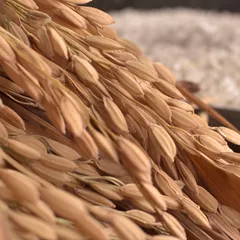
Mi Pi Kang is an assistant ingredient in Qi Ge San. This means that it either serves to reinforces the effect of other ingredients or it moderates their toxicity.
8. Rice Bran (Mi Pi Kang)
Part used: The rice bran
Nature: Warm
Meridian affinity: StomachLarge intestine
Category: Herbs that regulate Qi
Mi Pi Kang opens the Stomach, directs the Qi downward, and is a specific herb for the treatment of occlusion. Together, all the assistant herbs effectively facilitate the
downward-directing of turbid Phlegm and support the ascent of the clear Yang to unblock the Qi dynamic and eliminate Excess Pernicious Factors without causing further Dryness.
Qi Ge San is used to treat Qi Stagnation
It's important to remember that herbal formulas are meant to treat patterns, not "diseases" as understood in Western Medicine. According to Chinese Medicine patterns, which are disruptions to the body as a system, are the underlying root cause for diseases and conditions.
As such Qi Ge San is mostly used to treat the pattern "Qi Stagnation" which we describe below.
But before we delve into Qi Stagnation here is an overview of the Western conditions it is commonly associated with:
Esophagitis Esophageal diverticulum Early stages esophageal cancer
Again it wouldn't be correct to say "Qi Ge San treats esophagitis" for instance. Rather, Qi Ge San is used to treat Qi Stagnation, which is sometimes the root cause behind esophagitis.
Now let's look at Qi Stagnation, a pattern that TCM practitioners commonly treat with Qi Ge San.
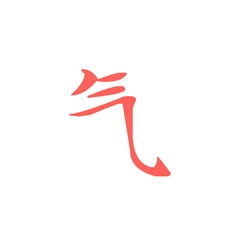
Qi is one of Chinese Medicine's vital subtances. Learn more about Qi in Chinese Medicine
Qi Stagnation
Pulse type(s): Tight (Jin), Wiry (Xian)
Tongue coating: Thin white coating
Tongue color: Red sides
Symptoms: Belching Vomiting Depression Mood swings Acid reflux Indigestion Late period Irritability Throat lumps Poor appetite Scanty periods Clots in blood Abdominal pain Frequent sighing Breast distention Soft palpable lumps Feeling of distension Moving distending pain Irregular menstruation Fixed pain in the hypochondria Premenstrual breast distension Mild coughing with copious sputum Premenstrual abdominal distension Feeling of oppression of the chest Stifling sensation in the chest and abdomen
Qi Ge San is sometimes prescribed by TCM practitioners to treat Qi Stagnation. This pattern leads to symptoms such as feeling of distension, moving distending pain, depression and irritability. Patients with Qi Stagnation typically exhibit tight (Jin) or wiry (Xian) pulses as well as Normal or slightly dark on side with white or yellow coating.
If the flow of Qi is impeded in any way, it becomes stuck or stagnant. This can be likened to a traffic jam on the freeway. That's why, unlike in the cases of Qi Deficiency or Qi Sinking, tonification is contraindicated: it would be like adding more cars to the traffic jam. Instead, Qi moving or... read more about Qi Stagnation
Formulas similar to Qi Ge San
Bei Mu Gua Lou San is 25% similar to Qi Ge San
Sang Xing Tang is 25% similar to Qi Ge San
Ren Shen Ge Jie San is 25% similar to Qi Ge San
Sheng Tie Luo Yin is 20% similar to Qi Ge San
Si Jun Zi Tang is 12% similar to Qi Ge San
Liu Jun Zi Tang is 12% similar to Qi Ge San

